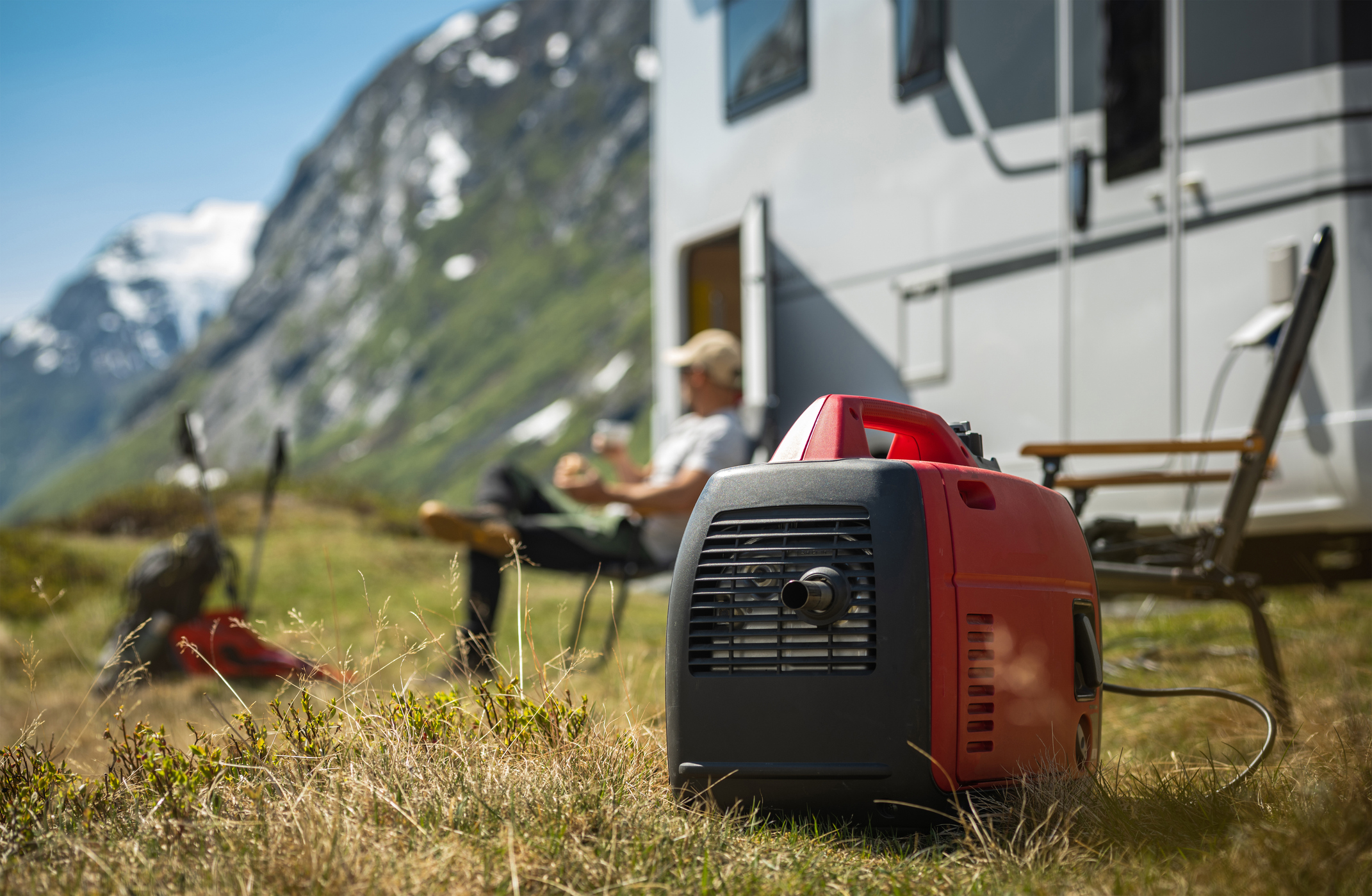A Quick Guide to RV Generator Maintenance: Essential Tips for Longevity | I Heart RVing

When you kick back in the wild with your RV, self-reliance is freedom — and reliable power generation is part of that. Whether you’re powering an air conditioner in the middle of the desert or charging up after a week of boondocking, a healthy generator ensures comfort wherever you are. But like any hardworking machinery, regular care keeps it running longer.
Here’s your no-nonsense guide to RV generator maintenance so your adventures don’t get interrupted by unexpected power failures.
Why RV Generator Maintenance Matters
Your RV’s portable power generation unit is more than a backup plan — it’s a lifeline when shore power isn’t available. It gives you the flexibility to park where you want and live how you want without sacrificing the comforts of modern life. But neglect your generator, and it won’t look after you.
Routine RV generator maintenance keeps your system running efficiently, helps avoid costly breakdowns and minimizes harmful emissions. It’s also an eco-friendly move. A clean-burning machine offers fuel efficiency and produces less harmful gas and pollution, lowering your RV’s carbon footprint for eco-conscious travel.
Pair an effective genie with excellent power storage using your RV’s battery, which typically requires replacement every three to five years if it’s correctly maintained.
Understanding Motorhome Generator Service
Know the difference between general upkeep and a full motorhome generator service — maintenance is your regular stuff, like oil changes and monthly exercise runs. However, full inspection means digging deeper, either DIY or with help from a pro, to handle things like spark plug replacement, filter swaps or electrical diagnostics.
Built-in generators, like those found in Class A or Class C RVs, usually require more intensive schedules than portable models. Always check your manufacturer’s guidelines for exact procedures.
Having a solar panel setup is ideal when your “genie” has to go for a service, and having a working fuel-powered source of electricity helps on rainy days when solar isn’t an option, so opt for both and maintain these systems with regular cleaning and power monitoring to avoid overloads and use energy wisely.
Ensure your generator is completely disconnected from any electrical devices and the unit’s battery before servicing to avoid accidental feedback and electrocution.
Key Generator Service Intervals
If you’re not keeping track of “genie” hours, you’re asking for trouble. Your generator has a runtime meter for a reason. Shortening the intervals if yours runs in dusty conditions or sits unused for long periods. Stick to these general generator service intervals unless your manual says otherwise:
- Every month: Run the machine at least once a month with a 50% load by running an AC unit or microwave. For backup units that you don’t use frequently, drain all fuel and start once a year, running it for an hour.
- Every 50 hours: Inspect and clean the air filter.
- Every 100 hours or annually: Change the oil and spark plug. Replace the air filter if necessary.
- Every 400–500 hours: Replace the fuel filter and check the fuel lines.
- Annually: Check the battery connections, inspect the exhaust system and tighten mounting bolts.
Step-by-Step RV Generator Service Guide
Performing your own RV generator service doesn’t require a mechanical degree. You can handle most tasks in an afternoon with a few basic tools.
1. Change the Oil
An oil change means you should:
- Run the machine for 30 minutes at half-load to heat the oil to a suitable temperature.
- Turn it off and allow it to cool slightly.
- Drain the oil, being careful as it may be hot, replace the filter and refill the reservoir with fresh, manufacturer-recommended oil.
2. Replace the Air Filter
Keep the engine breathing easily by:
- Removing the air filter housing and shaking out the filter.
- Replacing it if it’s clogged or brittle.
- Never use water or solvents to clean paper filters.
- Using antifreeze in water-cooled engines helps run at perfect operating temperatures.
3. Replace the Spark Plug
Ensure efficient startup with ignition management:
- Pull the old plug and inspect for carbon buildup or oil fouling, which burns the plug’s firing pin.
- Set the new plug’s gap to the manufacturer’s spec — typically 0.028 inches to 0.031 inches, but check your unit’s manual.
- Install and tighten the plug by hand.
4. Check Ventilation
To prevent overheating, the machine’s exhaust must remain free and unobstructed:
- Clean out any debris around vents and air intakes.
- For liquid-cooled models, inspect radiator and coolant levels.
5. Inspect Electrical Connections
Generators are precision machines, and when a wire comes loose or doesn’t make correct contact, it can trigger an electrical shock or fire. Always:
- Check terminals for corrosion.
- Tighten any loose cables.
- Wear gloves, work in a well-ventilated area and follow proper disposal rules for used oil and filters, which are combustion hazards if not correctly disposed of.
Common RV Generator Repair Issues
Even with regular upkeep, mechanical challenges may happen. You can tackle many of these yourself, but don’t hesitate to use a pro if something seems outside your comfort zone. Watch for these common RV generator repair red flags:
- Hard starts or failure to start: Usually, a chuffing “genie” happens because of dirty spark plugs, old fuel or clogged carburetors.
- Shutdowns under load: This could mean low oil levels, overheating or ventilation issues.
- Surging or uneven power: The usual culprit is a fouled carburetor, old fuel or air intake blockage.
- Excessive noise or vibration: Loose mounting bolts or worn-out engine parts may cause a noisy unit.
Tips for Extending Generator Longevity
Treat your power generation unit like a trusted travel companion, and it’ll pay you back with years of reliable performance. A few simple habits go a long way in ensuring your machine’s maximum lifespan:
- Run it monthly: Generators need regular exercise to stay lubricated and prevent fuel from gumming up gears and moving parts.
- Avoid short run times: Let it run for 30 minutes with a 30% load instead of quick bursts.
- Use a fuel stabilizer: Keeps gas fresh during storage.
- Start without load: Turn off appliances before firing the “genie” up.
- Log your maintenance: Record service dates, runtime hours and part replacements.
DIY vs. Professional RV Generator Maintenance
So, should you handle all RV generator maintenance yourself? That depends on your skills, confidence and the job at hand.
DIY is best for:
- Oil and air filter changes
- Monthly load testing
- Visual inspections and tightening bolts
- Replacing spark plugs
Call a pro for:
- Electrical diagnostics
- Ignition point adjustments
- Carburetor rebuilds
- Engine output testing in voltage or hertz
- Annual checks — ideal before a long trip or after storage
Keeping Your Generator in Top Shape
Maintaining your RV’s power generation capacity isn’t just about avoiding breakdowns — it’s how you power your freedom. With consistent motorhome generator service, attention to generator service intervals and a hands-on approach to RV dynamo engine maintenance, you’ll keep your rig powered wherever the road takes you.
Keep an eye on common RV generator repair signals, invest in regular checks and upgrades and know when to hand it off to the pros. Whether camping deep in the woods or just avoiding crowded hookups, a well-kept generator helps you roam farther, cleaner and with confidence.
Source: https://iheartrving.com/blog/a-quick-guide-to-rv-generator-maintenance-essential-tips-for-longevity/






